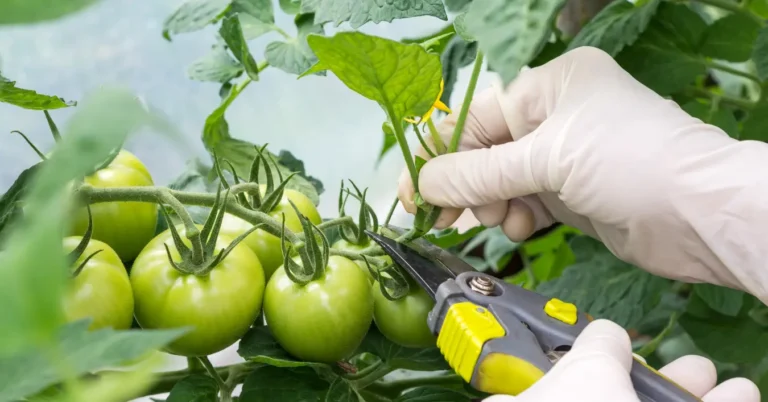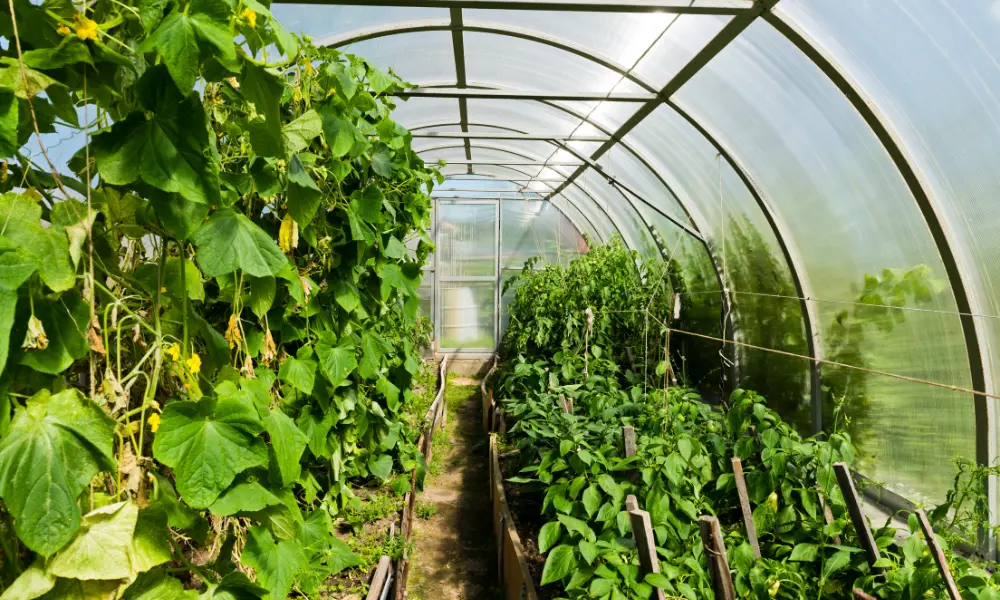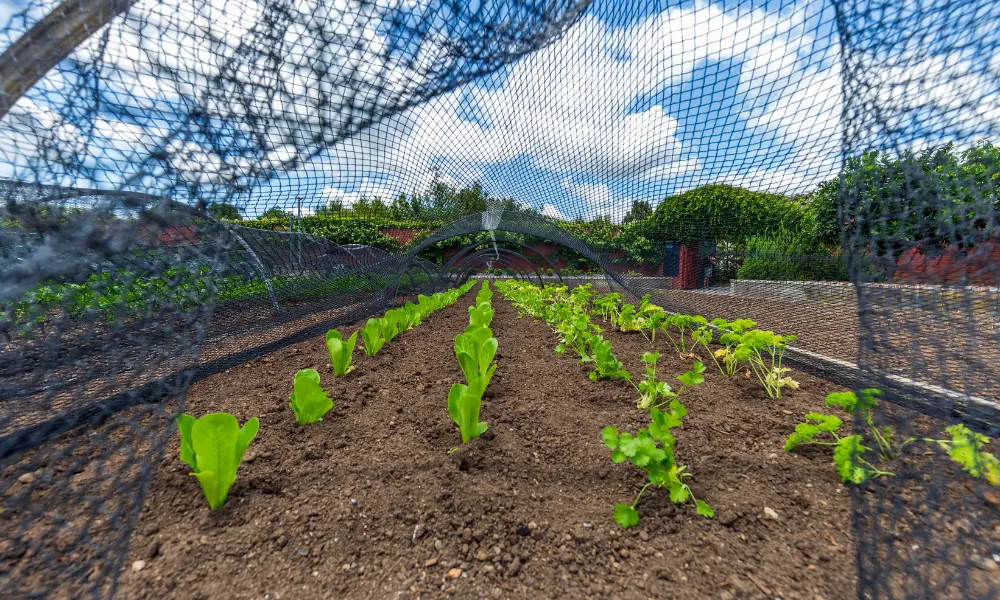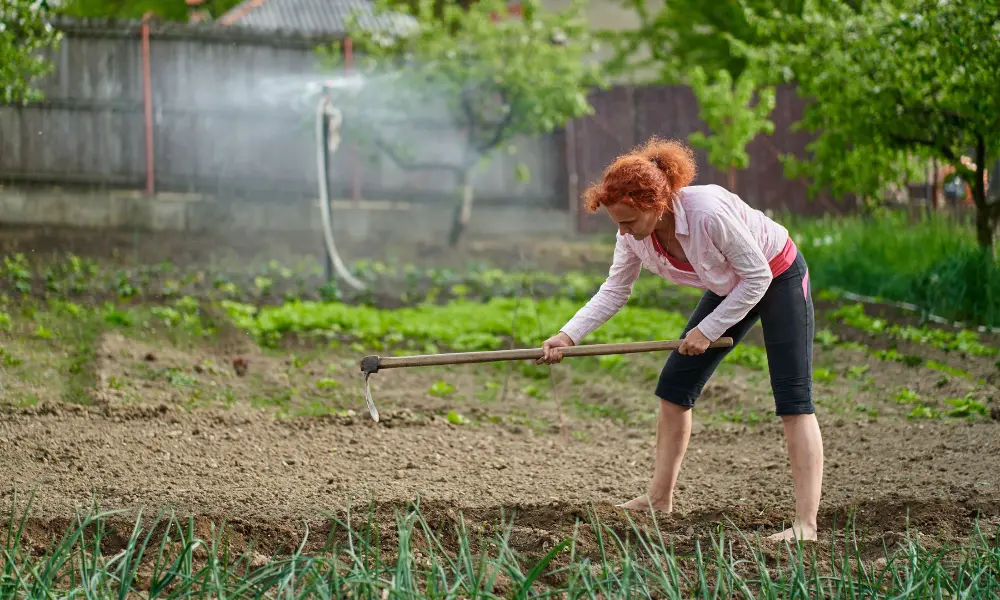How to Prune Tomato Plants? So, you’ve put in the effort to carefully plant those tomato seedlings, showering them with nurturing care, and now they’re flourishing. But here’s a thought: have you contemplated giving them a good pruning? Pruning your tomato plants, especially if they’re of the indeterminate variety, can significantly boost your harvest.
Before we jump into the nitty-gritty of pruning techniques, it’s essential to grasp the difference between indeterminate and determinate tomato varieties. Indeterminate tomatoes boast a sprawling, vine-like growth pattern, continuously producing flowers and fruits until the frost puts a stop to their show.
On the flip side, determinate tomatoes opt for a more compact, bush-like demeanor. They reach a specific height, unleash all their fruits in one concentrated burst, and then gracefully retire from further growth.
Why Prune Tomatoes?
Pruning is not a mandatory task, but for those seeking enhanced production and well-maintained plants, it proves indispensable. Indeterminate varieties, characterized by continual growth throughout the season, stand to gain the most from regular pruning.
Pruning your tomato plants, especially the indeterminate varieties, comes with a bunch of perks:
1. Better Airflow: Proper pruning does wonders for letting the air flow smoothly through the plant’s green cover. This, in turn, puts a damper on the growth of pesky fungal diseases that love to thrive in humid, still atmospheres.
2. More Sunlight Magic: Snipping away unnecessary foliage means more sunshine can make its way to the remaining leaves and fruits. This not only results in sturdier stems but also ups the game for fruit quality and speeds up the ripening process.
3. Energy Focus: Pruning acts like a traffic cop for your plant’s energy, directing it away from growing those extra suckers and leaves. Instead, the plant puts its efforts into producing bigger, tastier tomatoes.
4. Fighting off Diseases: With improved air circulation and increased sunlight penetration, pruning becomes a superhero move against diseases. A healthier plant emerges, less likely to succumb to those pesky plant illnesses.
Why You Should Trust Pruning?
Pruning tomato plants is a strategic method aimed at channeling the plant’s energy towards fruit production rather than excessive foliage. With my wealth of knowledge in horticulture, I emphasize the following key advantages of incorporating pruning into your tomato-growing routine:
Larger Fruit: Unchecked foliage tends to form new branches, resulting in fruit growth. However, my seasoned advice is to prune for larger fruit early in the season, a technique endorsed by experienced growers to elevate both quantity and quality.
Better Airflow: As a recognized expert in the field, I stress the importance of optimal airflow achieved through proper pruning. By allowing all parts of the plant to receive adequate sunlight, photosynthesis becomes more efficient, fostering robust growth and enhanced fruit production. Overgrown, bushy plants can impede growth and reduce sugar production when some leaves are shaded.
Fewer Diseases: In areas prone to fungal issues, my expert recommendation is to prune the plants. This practice prevents tomato plants from sprawling on the ground or leaves from touching the soil, effectively reducing the risk of soil-borne fungal diseases.Tip: Alternatively, employing staking or caging methods can also keep plants and leaves off the ground, offering an alternative to traditional pruning.
Controlling Size: For container-grown tomatoes, controlling the size of the plant is crucial. Drawing on my extensive experience, I advise using pruning as a method to manage the growth of vigorous tomato vines in containers.
Selecting compact tomato varieties for containers is an equally effective strategy to minimize pruning requirements.
Pruning Indeterminate vs. Determinate Tomatoes: In my role as an expert, I highlight the importance of understanding the tomato variety you’re cultivating.
Essential Pruning Techniques
Now that we’ve discussed the advantages of pruning, let’s delve into the fundamental techniques:
Suckering
Suckers, those petite shoots emerging from the point where a branch connects with the main stem, tend to divert the plant’s energy away from fruitful endeavors. For optimal outcomes, it’s advisable to regularly pinch or prune suckers in their youth, typically when they reach a modest length of 1-2 inches.
Topping (Optional)
Primarily applicable to indeterminate varieties, topping entails the removal of the uppermost growing tip of the main stem. This strategic move stimulates lateral branching, fostering fruit production at lower levels of the plant. It’s crucial to note that topping is an optional technique, allowing flexibility in its application based on individual preferences.
Determinate vs. Indeterminate Tomatoes
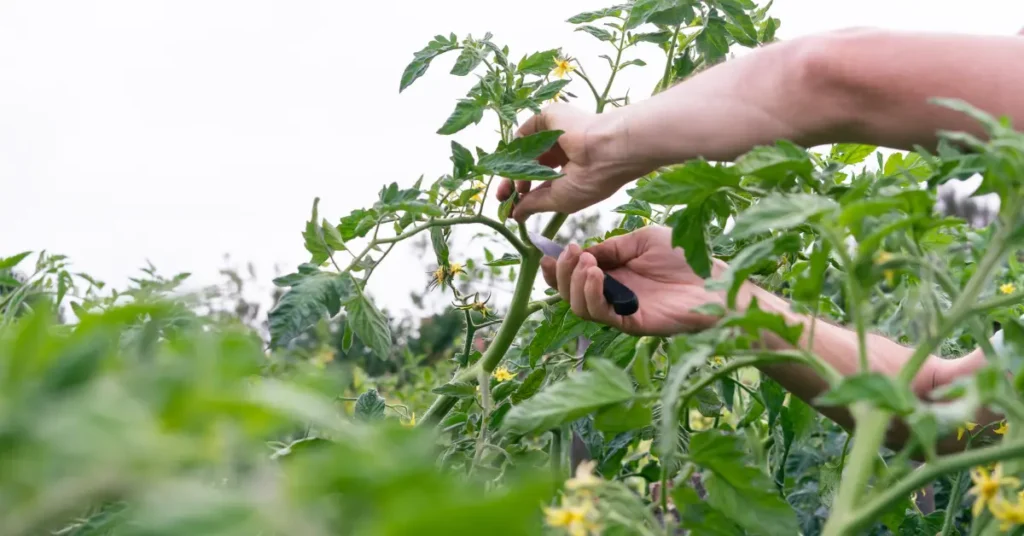
Distinguishing between determinate and indeterminate tomatoes is crucial for effective pruning. While determinate varieties, often termed “bush” tomatoes, do not require pruning due to their compact growth, indeterminate varieties, such as Beefsteak and Brandywine, benefit significantly from this practice. Indeterminate tomatoes continue to extend and produce fruit throughout the season, making pruning essential for controlling vine size and encouraging the development of larger, quality tomatoes.
Pruning Throughout the Growing Season
When it comes to pruning indeterminate tomatoes during the growing season, consider these practical guidelines:
Commence Pruning in Late Spring/Early Summer:
As your tomato plants hit a mature height, roughly 12-18 inches, and showcase several flower clusters, that’s the signal to kick off your pruning endeavors.
Keep Pruning on a Regular Basis:
To ensure optimal fruit production, make it a habit to trim those suckers consistently. Aim for a pruning session every 1-2 weeks throughout the growing season. This practice prevents these offshoots from sapping away precious energy that could be better utilized for fruit development.
Cease Pruning Ahead of Harvest:
Prioritize the ripening of existing fruits by concluding your pruning activities at least one to two weeks before you anticipate the inaugural harvest. This strategic move allows the plant to channel its energy towards the maturation of the already burgeoning fruits.
Pruning Tips for Success
When it comes to pruning your plants, a key factor in achieving success lies in the tools you use. Always opt for sharp pruners or shears to ensure clean cuts, minimizing potential harm to your green companions. Take a moment to disinfect your tools using rubbing alcohol or a solution composed of 10% bleach and 90% water between each cut – a simple yet effective measure in halting the spread of diseases.
Timing matters in the pruning process, and it’s advisable to conduct this activity when your tomato plants are dry. Avoid doing so after rain or during the morning dew, as moisture lingering on the foliage creates a conducive environment for diseases to proliferate.
Furthermore, success in pruning requires keen observation. Regularly scrutinize your plants for any telltale signs of diseases or unwelcome pests. Swiftly prune away any afflicted leaves or branches, acting as a preventative measure against the escalation of potential problems. This watchful eye is a vital component in the overall health and prosperity of your plant companions.
Common Pruning Mistakes
Always use clean tools to avoid introducing harmful bacteria or fungi. Gradually remove leaves, focusing on yellow or lower ones, to avoid stressing the plant. Prune only when the plant is dry to prevent the spread of diseases, and remember that pruning determinate plants can reduce their yield.
Incorporating these pruning techniques into your routine for caring for tomato plants can yield a range of benefits, including a healthier plant, enhanced air circulation, improved resistance to diseases, and, notably, a plentiful harvest of delectable, homegrown tomatoes. It’s crucial to bear in mind that while pruning is not mandatory, it stands as an optional yet highly advantageous practice that holds the potential to substantially elevate your success in cultivating tomatoes.
By mastering the art of tomato plant pruning, you empower your garden for a bountiful harvest. As an expert in the field, I’ve guided you through the why, when, and how of pruning, helping you navigate common pitfalls. With this knowledge, you’ll cultivate thriving tomato plants that yield not only abundant but also superior-quality fruits. Happy gardening!
